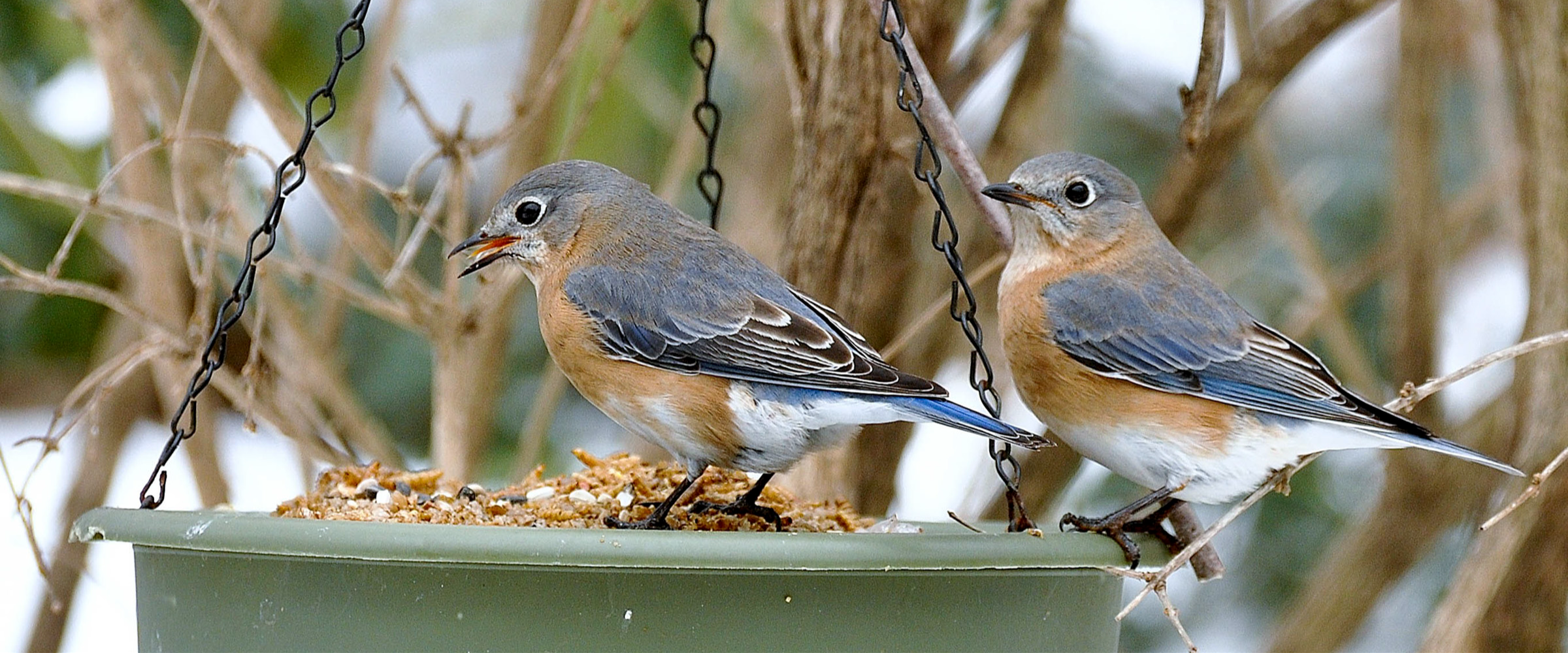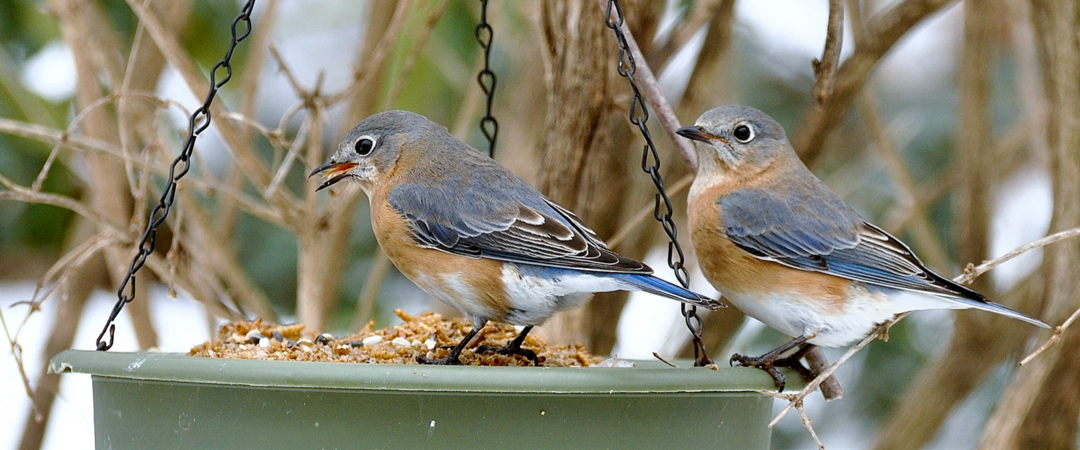Feeding birds is one of the great joys for winter birders. While setting up a feeder of your own can be fun, it comes with the responsibility of keeping your feeder birds safe. Follow these tips to make sure your feeder brings your local birds as much joy as it brings you!
Clean feeders are best for birds.
Feeders that aren’t regularly cleaned can be dangerous for birds. Dirty feeders can grow deadly mold that makes birds sick, and otherwise be a space where disease can spread.
“Regularly emptying and disinfecting feeders is of utmost priority when feeding birds to prevent cross-contamination of many potential illnesses that birds can share at feeders,” says Sunny Kellner, wildlife rehabilitation and outreach specialist at the Sharon Audubon Center.
She advises that feeders be cleaned at least every other week, but more often in the case of especially wet weather (like snowstorms) or if sick birds are spotted at the feeder, and every time the feeder is emptied, before it is refilled.
What’s the best way to clean a feeder?
Start with emptying the feeder, making sure to dispose of excess seed in the trash if there are any signs of illness or mold. Scrub the feeder with warm, soapy water, making sure to focus on perches and seed access holes. Next, soak the feeder in a solution of 1 part bleach to 9 parts water for about 15 minutes before rinsing it thoroughly with water. Allow this to dry completely before refilling the feeder and putting it back up.
Other ways to clean a feeder include boiling it in water or soaking it in a solution of 1 part white vinegar to 1 part water, especially when cleaning the feeder more frequently.
While keeping your feeders clean, be sure to keep the areas around them clean as well! Regularly removing accumulated droppings and seed debris beneath feeders also helps to prevent the spread of illness and mold growth.

Keep an eye out for illness.
Audubon is monitoring the spread of avian flu. We recommend monitoring birds in yards and at birdfeeders at a safe distance and checking regularly whether your local, state, or federal wildlife agencies are recommending that wild bird feeders be taken down. In the meantime, we suggest following the recommendations of the CDC and other regional health authorities to follow general guidelines like avoiding touching dead birds.
As much as we enjoy seeing a feeder absolutely covered in birds, having so many birds congregated in one area can accidentally turn it into from a feeding ground to a breeding ground for illness. Paying attention to the behaviors and appearance of feeder birds can help prevent this from happening.
What should you look out for? Crusty, swollen, squinty, or even closed eyes can be a sign of illness, especially of House Finch eye disease—which more than just House Finches can get. Fluffed feathers, lethargy, and uncoordinated movements are other signs to watch out for. Also, be sure to check for bright green droppings on or around your feeder. If a bird doesn’t fly away when approached or is easily caught, that is also a sign of illness or injury.
Noticing any of these signs of sickness at your feeder may mean it’s time to take it down for at least several days and give it a good cleaning with the instructions in this article. Be sure to get in touch with a local wildlife rehabilitator who can provide important advice on how best to proceed.
Watch out for windows!
…is what you probably wish you could warn your feeder birds to do. Even though we can’t tell our birds how to stay safe, we can help them out by placing our feeders in ways that discourage accidental window collisions.
Window collisions occur when a bird mistakes the reflection in a window for open space and hits into it. These incidences are often fatal, whether immediately upon hitting the glass or due to damage caused by head injuries from impact.
Bird feeders are safest for birds when placed either within 3 feet of a window or 30 feet away from a window. Feeders that sit directly on windows, whether attached by suction cups or another mechanism, are also safer for birds, and more convenient for people who do not have large yards.
These methods are especially effective when used with other window collision prevention tactics, such as putting up decals or putting up protective screens.
By using the above methods, you can make sure that your bird feeder is as great for birds as it is for you!





